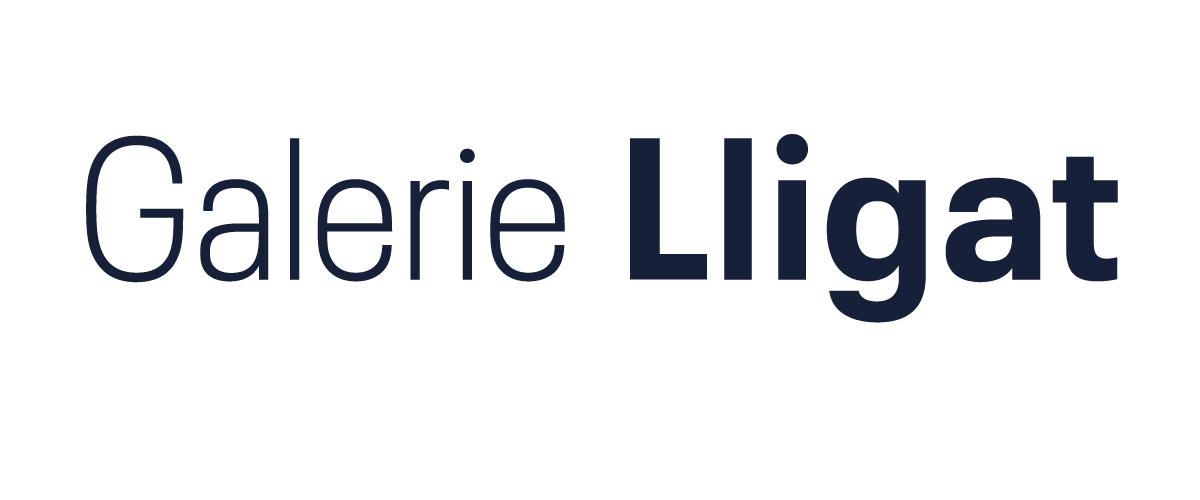Artists
See all Artists

Naym Ben Amara …
Born in Bastia in Corse (France), in 1984. He lives and works in Aveyron.
University studies in Organic Chemistry in Corsica, punctuated by artistic research extended to various practices: theatre, dance, painting.
Since 2014, Naym Ben Amara has devoted himself exclusively to drawing with Indian ink.
I sometimes point out that my aesthetic conduct usually begins with a blank sheet of paper. In explaining this research, I sometimes compare the blank sheet of paper to a neutral photographic film, a blank film. Like a photographer’s material, my medium is such that I can fix, concretise, realise and capture forms on it. It is possible to say, indeed, that I capture these forms: captation and, so to speak, catch. Captation because it is a sampling. Catch because it is called to be definitively fixed, that is to say, taken when it is unfinished, it is up to it, the form, to bear witness [to memory] to its concretisation, its materialisation. Dialogue, finally, because I have come to understand that the emergence of a form is undeniably a kind of conversation with it.

Didier Béquillard …
Born in Paris.
Lives and works in Pyrénées Orientales and in Hamburg.
Didier Béquillard travels, observes, observes himself, in order to define the human being plastically by what he surrounds himself with, protects himself with, these forms that he creates and that mould him, these paths that he traces and that orient him, often guide him. Architecture and urbanism as objects of study, palaeontology applied to human spaces, abandoned shells of a strange snail whose slime, fossilised, traces roads, networks, meshes, grids. This is the object. — Etienne Glass, décembre 2010.

Enna Chaton …
“What is very difficult is to go beyond the stereotype, the norm, the standards of beauty, the representation of bodies.
I meet people through classified ads, they are totally voluntary. I find this “non-economic” relationship with others very important. There is a lot of organisation time in the work, exchanges by email to explain where I want to go, to build confidence. The work starts there, even before the meeting. It starts with the words.
What I really like to do is to go out into the landscape. For example, recently I was with a person. We both drove through the landscape, we found a place where people were passing under a bridge, there was a road where cars were driving. And for the record, we were surprised by a jogger! When he passed by he didn’t dare to really look at us. This is something that can always happen when you work outside.” Interviewed during a carte blanche on the Canal + programme “Mensomadaire”, October 2011.

Marielle Degioanni …
Marielle Degioanni was trained in applied arts as soon as she completed her baccalaureate and obtained a BTS in visual communication in 1998. She gradually developed her drawing practice and followed a D.U. in artistic mediation therapy with a speciality in plastic arts at the University of Paris V Descartes in 2015. In parallel with her plastic research, which will intensify from 2012, she teaches in art schools.
My drawings are a commbination of radicality and delicacy, I attack the paper as I caress it, it’s an ambivalent process, which I like to compare to certain erotic games. I’m looking for an absolute, it’s a quest that concerns the questions of incarnation, of regeneration, of the vital vegetal and feminine energy, their sacred and universal character: it’s a question of giving substance to this invisible and out of language energy flow that I perceive. — Marielle Degioanni, september 2019.

Valérie du Chéné …
Born in Paris, Valérie du Chéné lives and works in Coustouge in the Aude.
She studied at the École Nationale Supérieure des Arts Appliqués et des Métiers d’Arts, Olivier de Serres, in Paris where she obtained a BTS in Architectural Environment Design. She then studied at the École Nationale Supérieure des Beaux-Arts de Paris (ENSBA), from which she graduated in 2001.
— It is important to me as an artist today to make visible mechanisms of life or elements of volume that do not appear or no longer appear: “to make visible a piece of reality”.

Jihane Khelif ...
Born in Nogent sur Marne (France), in 1982. She lives and works in Occitanie.
The painting has an obvious photographic dimension, but Jihane Khélif maintains a profoundly close relationship with her model. She establishes a dialogue with a family photo that one imagines she has found in a family album. By projecting it onto the canvas, the artist transforms it into the matrix of a new, more indecisive and deeply personal image. By losing its sharpness, the photographic image gains in thickness, in warmth; through the uncertainty of the contours, the softness of the forms, the patina of the colours, Jihane Khélif transforms it into an impression, a feeling of a happiness that is both fleeting and eternal. — Thomas André 2021.

Brigitte Kühlewind Brennenstuhl …
Born in Veckenstedt (former East Germany) in 1949.
She lives and works in the Pyrénées-Orientales.
She was trained in East Germany during the period of legitimisation of a “socialist nation” in a “socialist state”, first in industrial design and then in graphic art at the Berlin School of Applied Arts.
In parallel to her work as a graphic designer, she developed her own artistic research.
She left East Germany in 1986 after spending a year in the Hoheneck women’s prison, where she was imprisoned for attempting to escape to the West.
From 1987 she exhibits in Italy and Switzerland, then moves to France where she shows her work from 1992.
Brigitte Kühlewind Brennenstuhl’s work is deeply rooted in her biography. Each painting, each drawing, each installation is a dissection at work: Which body? Which father? Which environment? Which territory? Which mother? Which kind of sex ? Which subjectivity?
Between the examination of the psyche and the incessant circulation of childhood memories, Brigitte Kühlewind Brennenstuhl’s work is frontal, overwhelming and shares a singular nostalgia.

Jérémy Louvencourt …
Jérémy Louvencourt, born in 1989, lives and works in Paris. He graduated in 2011 with a Higher Diploma in Applied Arts (Toulouse Arena School). He takes part in 2011 in the Road Strip#4 exhibition, an exhibition in the public space, for the Pavillon Blanc de Colomiers. In 2013, he won the SKIN contest set up by Arjowiggins Creative Papers for the creation of a paper mask and the same year exhibited his first drawings at Chécy (45), “L’infini grand ou l’infini petit”. In 2017, he enters the French collection of the “Imago Mundi Art” project of the Benetton Foundation. In 2020, he was a finalist for the “Déclics Jeunes” grant from the Fondation de France, for an artistic trip to Mexico to discover the manufacture of Amate paper. Jérémy Louvencourt invites us to take a look from near or far. From far away, psychedelic forms that could be part of a decoration, a textile or a wallpaper. From close-up, micro-organisms that seem to move, constantly changing position. In the end, one has the feeling that one is witnessing the creation of a world, in the manner of Jens Harder at the beginning of “the wonderful Alpha”.
He explores the boundaries between science and mystical dimensions. Alchemy is a powerful resource in his work, as is the quasi-shamanic aspect of his work. It is therefore no coincidence that the viewer hesitates between microcosm and macrocosm when contemplating his work. The artist wishes to link two universes and make us touch the unknowable.
He is reconnecting with a visual anthropology by drawing on interpretations of the world.
that appeal to animism, shamanism or esotericism. His practice of drawing is linked to the social and cultural history of the southern territories (India, Mexico) which resist
to the aesthetic and cultural uniformity imposed by the colonising European projects. This relationship leads him, among other things, to the search for paper supports whose natural manufacture is part of ancestral practices through which peoples try to
to ensure the continuation of a common territorial culture.

Muriel Persil …
A multidisciplinary artist, born in Paris in 1966, Muriel Persil studied at the Beaux-arts workshops of the city of Paris as well as at the Académie de la Grande Chaumière and at the studio of the painter Sotomayor where she developed her taste for anatomy, the nude and portraiture.
As a scenic painter, trained and qualified at the CNACFAG, she has for many years exercised this professional activity in parallel with that of a painter, exhibiting regularly in France (Paris, Montpelier, Céret, Perpignan) and in Spain (Barcelona, Girona).
In 2013, having moved to the south of France, she decided to devote herself to sculpture through ceramics. Although she is an autodidact, she very quickly masters this art and medium and develops in space her universe in which strangeness and ambiguity reign in master.
Indeed, her sculpted or painted work is also imbued with the same sense of the hidden, of the elsewhere where symbolism occupies a large place. It is also in the imaginary, the fantastic and the myth that the artist nourishes her reflection on the links between Man and nature and on death.

Patricia Stheeman •••
“The centre of my work certainly is based on the idea of passage, itinerary or travel. It is not without reason that I have long been interested in stories of ascents and geographical discoveries. Photography is my starting point. I collect personal or borrowed photographs from different media in order to build up my documentation. As in the case of departures for a long journey where we eliminate the superfluous, I use drawing, with which I find the essential: a nomadic practice with the simplicity of Indian ink on paper. The few means I use allow me to optimize my drawings. They can gain in size (large formats), sometimes even be deployed in the space of an architecture in the form of monumental projections of video animation or in installation. In the same way, drawing with the Rotring, a technical drawing instrument that I use for its fine lines, allows me to enter into the complexity of natural materials. Comparable to lace, the textures of roots, soils or slopes develop in profusion. The rendering made of details, increased, can disturb the perception. The chosen fragments of reality seem to be located in an indefinable space. Something in the vision does not fit. Are we above, on top, on the surface or in-depth?” Patricia Stheeman 2021

Édouard Trémeau …
Born in Theillay in 1936, Édouard Trémeau has been working in the Lille region since 1963. He was trained at the School of Applied Arts from 1952 to 1956, then at the École Nationale Supérieure des Beaux-Arts de Paris in 1956-1957 and at the École Normale Supérieure de Cachan from 1957 to 1961.
Close to Narrative Figuration and the Salon de la Jeune Peinture at the end of the 1970s and the beginning of the 1980s – he was vice-president of the salon in 1983 – he took part in various collectives that denounced forms of political oppression and social and economic inequalities such as “imprisonment, the place of women, hunger, torture, ordinary fascism, racism” [Francis Parent, Raymond Perrot, 2016, p.184].
In 1981, during an exhibition at the Pierre Lescot Gallery in Paris, the painter claims to have left his studio to look outside. He then painted scenes inscribed in the daily life of the “early Mitterrand years”, which show man’s anxiety in the face of the society of control, in front of the silent violence that threatens the bodies in a way similar to Façades n°5 (Tout en bon ordre), July-August 1980, acquisition of the L.A.M. Musée d’Art Moderne, d’Art Contemporain et d’Art Brut – Lille Métropole in Villeneuve-d’Ascq in 1983.
Then the retreat to the workshop, nourished by the traces of many travels, succeeded to collective projects which resisted badly to the rise of economic and financial liberalism. His work is then divided into major themes – solitude, confinement, ruin, which open on series: hostages (1982-86), Berlin (1987-89), Zoolitude (1998-2002), Rome (1991-94), Rome outside the walls (1994-97), or many self-portraits that punctuate the years of creation until the series of Gisants “L’évidence” (The Evidence) made from 2006 to 2008.
The painter’s body undergoes a remarkable ” state of affairs “, a remarkable pretext for questioning once again its relationship to the history of art, and recalling ” Andrea Mantegna, Philippe de Champaigne, the two anatomy lessons of Rembrandt, Hans Holbein “.
Haunted by the violence of History, which he couples to the History of Art, Édouard Trémeau paints in confrontation with “biopolitical” time. However, each painting calls for a demanding pictorial technique that dialogues with masters. Considered by Édouard Trémeau as “a great whole”, his gesture makes each of his works a world in itself, even when they are elaborated from a photographic fragment which, according to the painter, brings back a corner of reality, like an exploratory beginning.

Muriel Valat-B …
Muriel Valat-B already added the mention “plastic arts” to her background when she was preparing for her literary baccalaureate in 1979. Although Khâgne led her to teach French in Austria, a course in art history followed in New York in 1985 heralded the resumption of her studies in visual arts, first at the ENSBA in Cergy-Pontoise and then at the University of Paris-Sorbonne. In 1992 she completed the capes of plastic arts at the University of Paris-Sorbonne, the last academic step before the Berlin rupture.
Muriel Valat-B then set up her studio in Berlin in 1994 in a former factory in Kreuzberg and focused on painting and engraving. She has regularly exhibitions of her work in Germany and has deepened her practice of intaglio engraving, silkscreen printing and lithography in the graphic workshops of the Bethanien Künstlerhaus in Berlin-Kreuzberg.
In 2006, after a diversion to Hamburg, Muriel Valat-b returned to France to Planèzes in the Fenouillèdes, where she continued her plastic research in a kind of retreat.
Since 2016, she has been collaborating in the design and running of workshops exploring the relationship between writing and the plastic arts with various structures and associations. In 2017, she will set up a second workshop in Perpignan and her work will be directed on textiles.
— A visual artist, but literature is still very present.
Some artists work “in music”; I work “in poetry”. My plastic work walks in the company of poetry. A word, a sentence, an unexpected association of words, an atmosphere, inspire a line, a stain, a texture, a new combination of colours, fragments of images, provoke a gesture, an action, encourage an assembly of materials, the discovery of a new tool.
Poetry offers me its audacity, invites me elsewhere and yet gathers me where I am, surprises me, moves me, awakens my perception, puts my mind on holiday, open to the surprises that invite themselves on the canvas, on the copper, on the wood.
In return, a spot of colour, a stroke of eau-forte, a sketch will set off in search of a word, a phrase. An encounter, a dialogue, which helps me to reveal what I don’t see. — Muriel Valat-B


